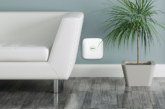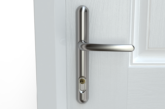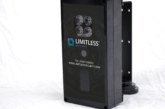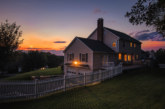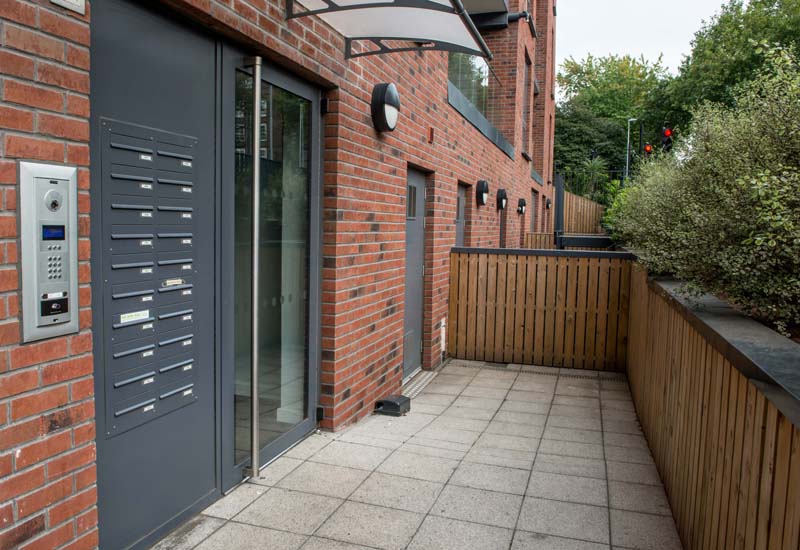
PHPD puts some of the key questions about the new Approved Document Q to Secured By Design – the flagship police initiative looking to help builders ‘design out crime’.
Approved Document Q: Security – Dwellings, Part Q of the new Building Regulation (often known as Part Q) which took effect in England in October last year, requires that, in new build residential developments in England and Wales, reasonable provision is made to resist unauthorised access to new dwellings.
This clearly has implications for property design and the products used in them. The flagship police initiative Secured by Design has a remit to ‘design out crime’ from buildings and has a team of experts to advise property developers and housebuilders on how best to comply with this new legal security requirement. Here they answer some of the most frequently asked questions about the new situation.
Q: What are the key requirements of Part Q and where does it apply?
Part Q applies to all new dwellings, including those resulting from a change in use of an existing building, such as commercial premises, warehouses and barns undergoing conversions into dwellings. It also applies in Conservation Areas.
Part Q imposes security requirements for doors at the entrance to a building, including garage doors where there is a connecting door to the dwelling along with ground floor, basement and other easily accessible windows, and any easily accessible roof-lights. The basis of the requirement is that the product must be shown to have been manufactured to a design that has been tested to an acceptable security standard.
The following products fall within the scope of Part Q:
- all dwelling entrance doorsets
- all easily accessible windows, roof windows and skylights
- communal entrance doorsets (flats/apartments)
- emergency exit doorsets allowing access into the common areas of the building (flats/apartments)
- other doors that may allow access into common areas of the building (flats/apartments), such as drying rooms, cycle stores and refuse areas
- If there is a connecting doorset between the garage and the dwelling, then either the main vehicular doorsets, together with any pedestrian doorsets, will fall within the scope of the regulation, or alternatively the connecting doorset.
Q: When did Part Q take effect?
It came into effect on 1st October 2015. It does not apply to work started before that date nor to work subject to a building notice, full plans application or initial notice before that date, providing work is started on site before 1 October 2016.
Q: Does Part Q apply to all homes?
No, the new Building Regulation only applies to new homes and existing buildings that are being converted into new homes only (such as a warehouse, barn, etc). Existing homes are currently not required to meet the security requirements within Part Q.
Q: Does the new Building Regulation Q apply to key worker or student accommodation?
If the accommodation provided is clustered into groups of bedrooms served by a shared front entrance doorset – similar an apartment layout – then Part Q is applicable. However, if the bedrooms are off a shared/common hallway then the developments falls outside the scope of Part Q.
Q: Are the requirements of Part Q and Secured by Design the same?
No, whilst the technical standards within Part Q and SBD are the same, SBD requirements call for all door and window products to be fully certificated. This ensures that the company fabricating the doors or windows has been subject to factory production controls protocols and regular product and test audits by the certifying authority to ensure the continued quality and security needs are met.
Part Q asks for testing only. The dramatic reductions in burglary rates and anti-social behaviour seen with the introduction of Secured by Design products, is based on the use of certificated products rather than those that are just tested to the relevant standard.
Q: I would like to use products that meet the European security standard (EN 1627), does this meet Part Q?
No, the National Forward for the UK version of the European Standard (BS EN 1627) makes it clear that PAS 24 is the preferred route to compliance. This is for good reason: the European standard fails to address some important areas of security which would render such products vulnerable if used in the UK.
Q: Does Part Q apply to doorsets leading to a balcony?
Yes. Doorsets providing access to a balcony are required to be secure.
Q: Which Building regulation takes precedence for apartment/flat entrance doorsets – Part B or Part Q?
Neither. Both have equal weighting within the Building Regulations. It is imperative that fire doorsets are tested in exactly the same configuration as they were tested for security. You cannot add any additional or alternative features to an apartment/flat doorset without ensuring that the doorset meets the requirements for both fire and security. Some examples of areas that need careful consideration are as follows:
- Glazing: you must ensure that all fire-rated glazing either meets the requirements of BS EN 356 grade P1A (min) or is supplemented by additional security glazing meeting the same standards
- Locks: the locks must be the same for both fire and security testing
- Letterplates: if letter plates are required, the manufacturer must demonstrate compliance with both the requirements for fire and security
- Concealed door closers: some types of concealed door closer can substantially increase the risk of a security test failure when installed in particular types of door materials. Concealed door closers should therefore be installed within the doorset when it is security tested to ensure compliance.



